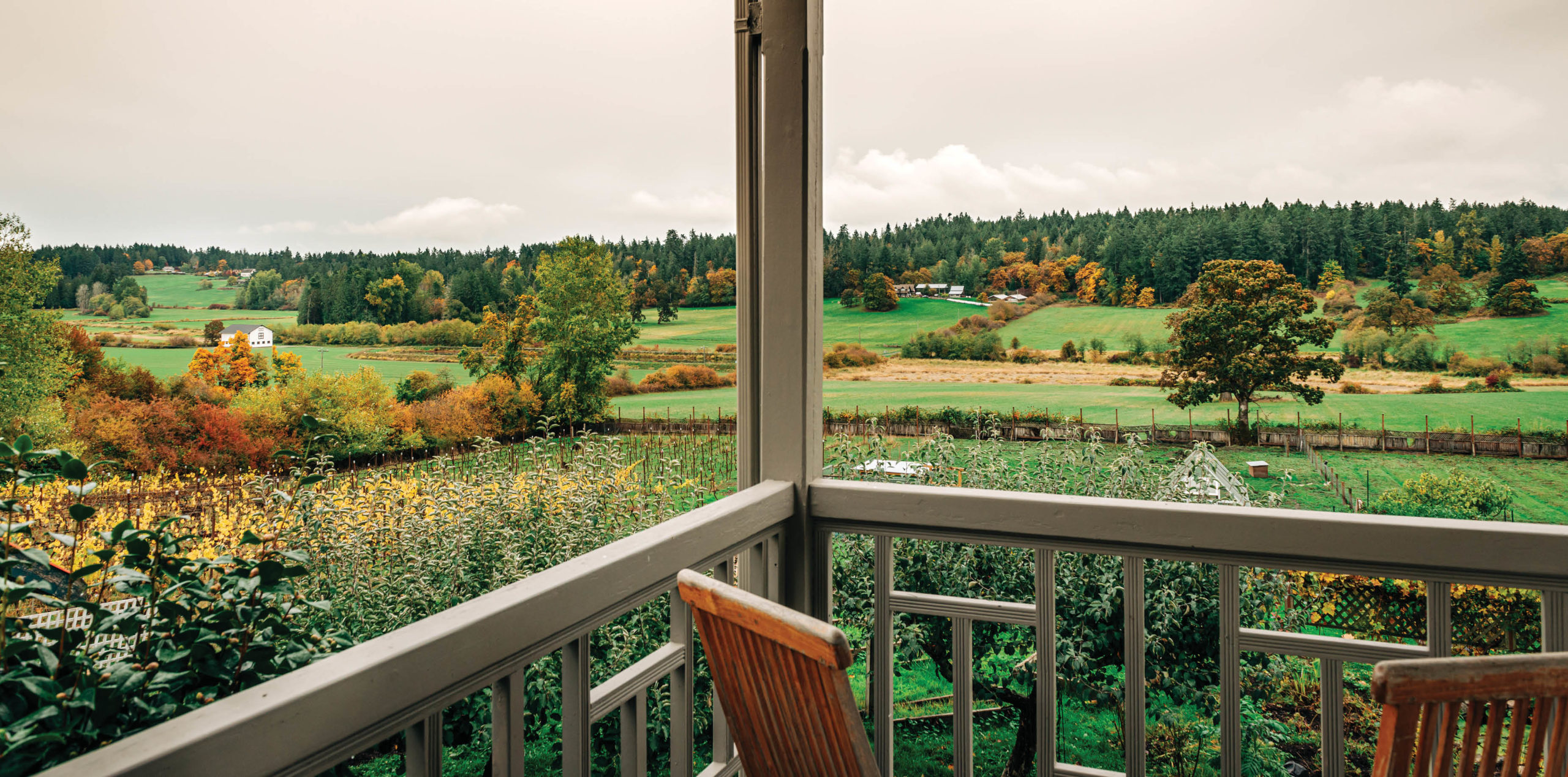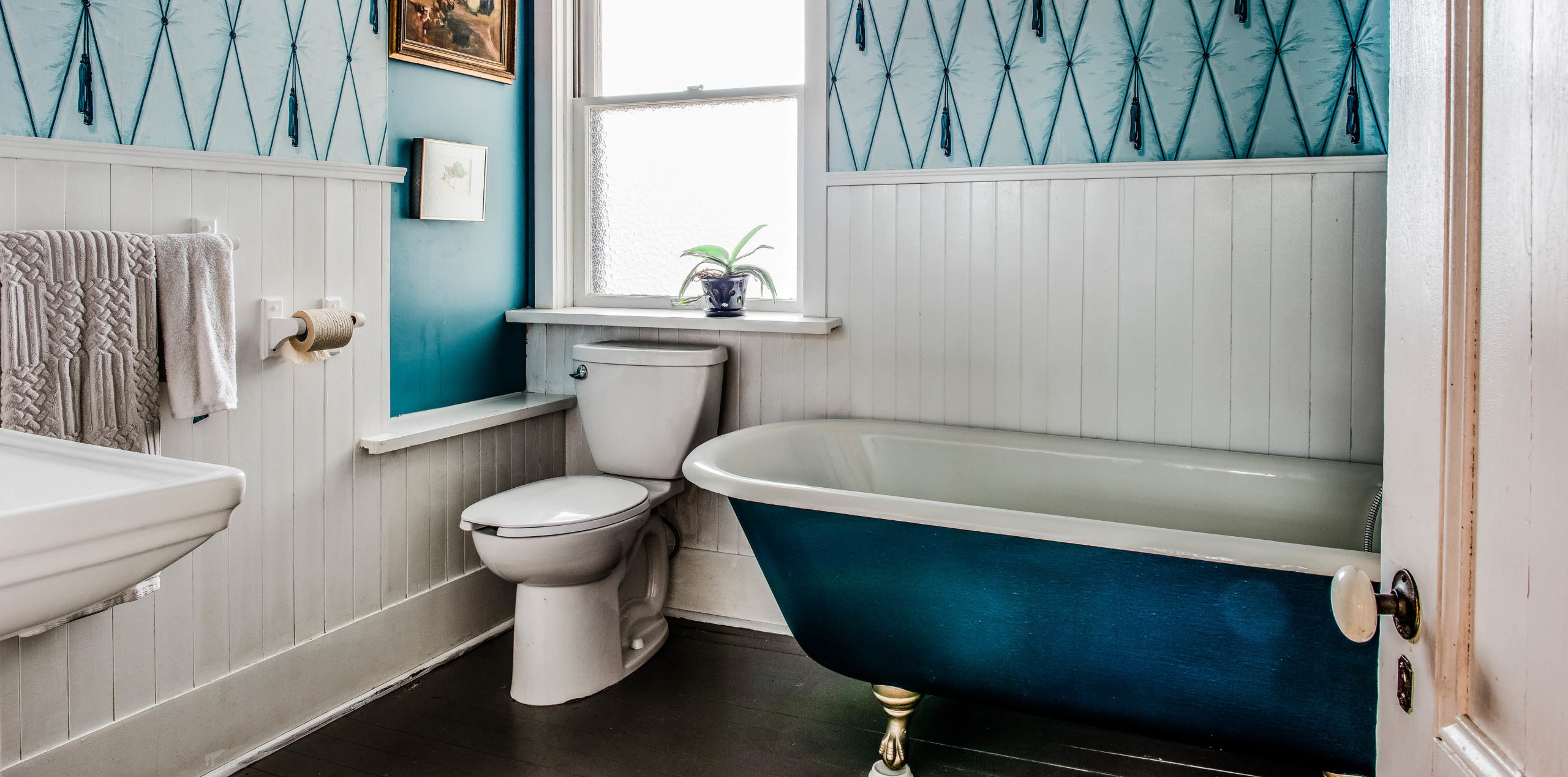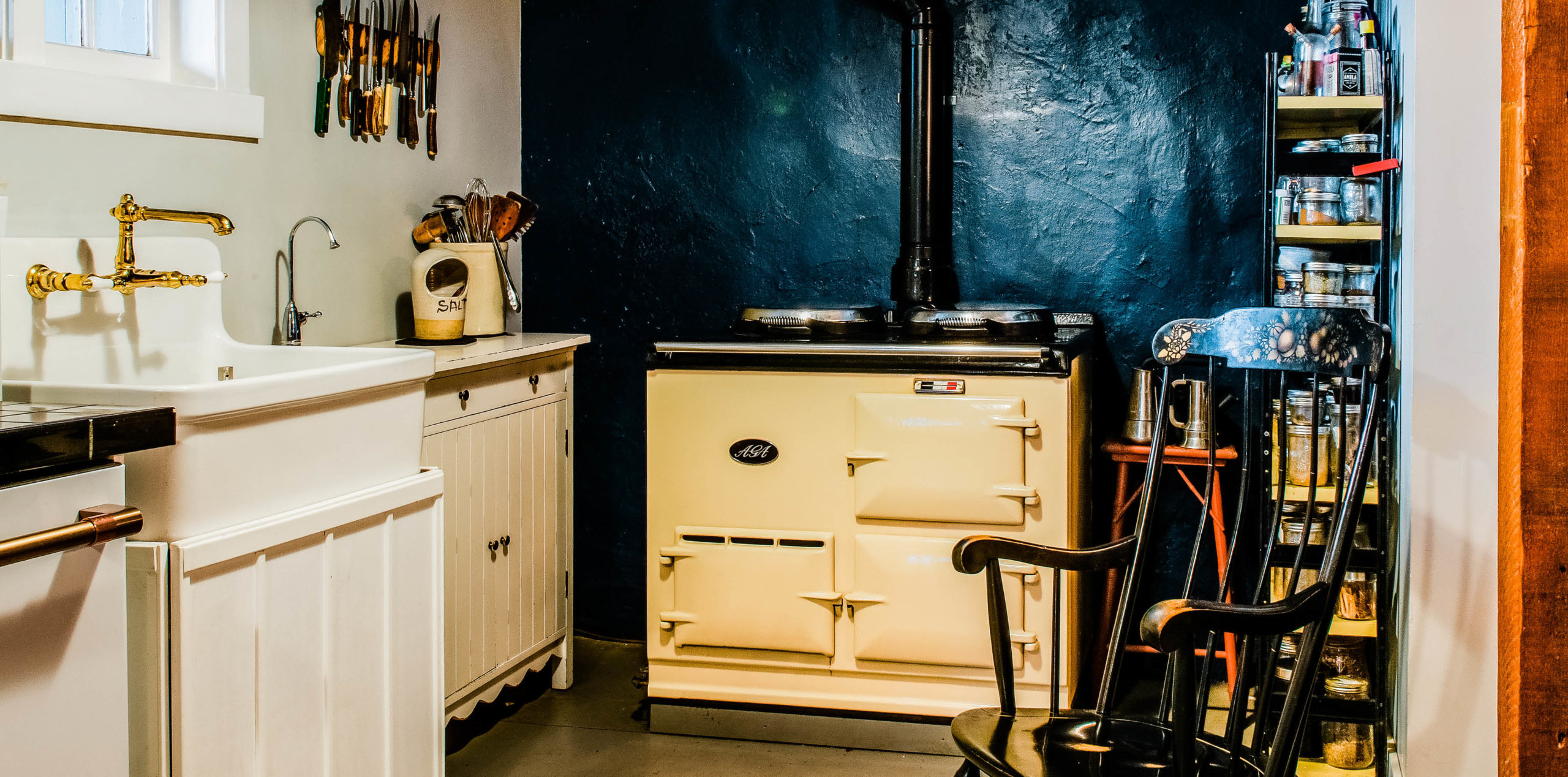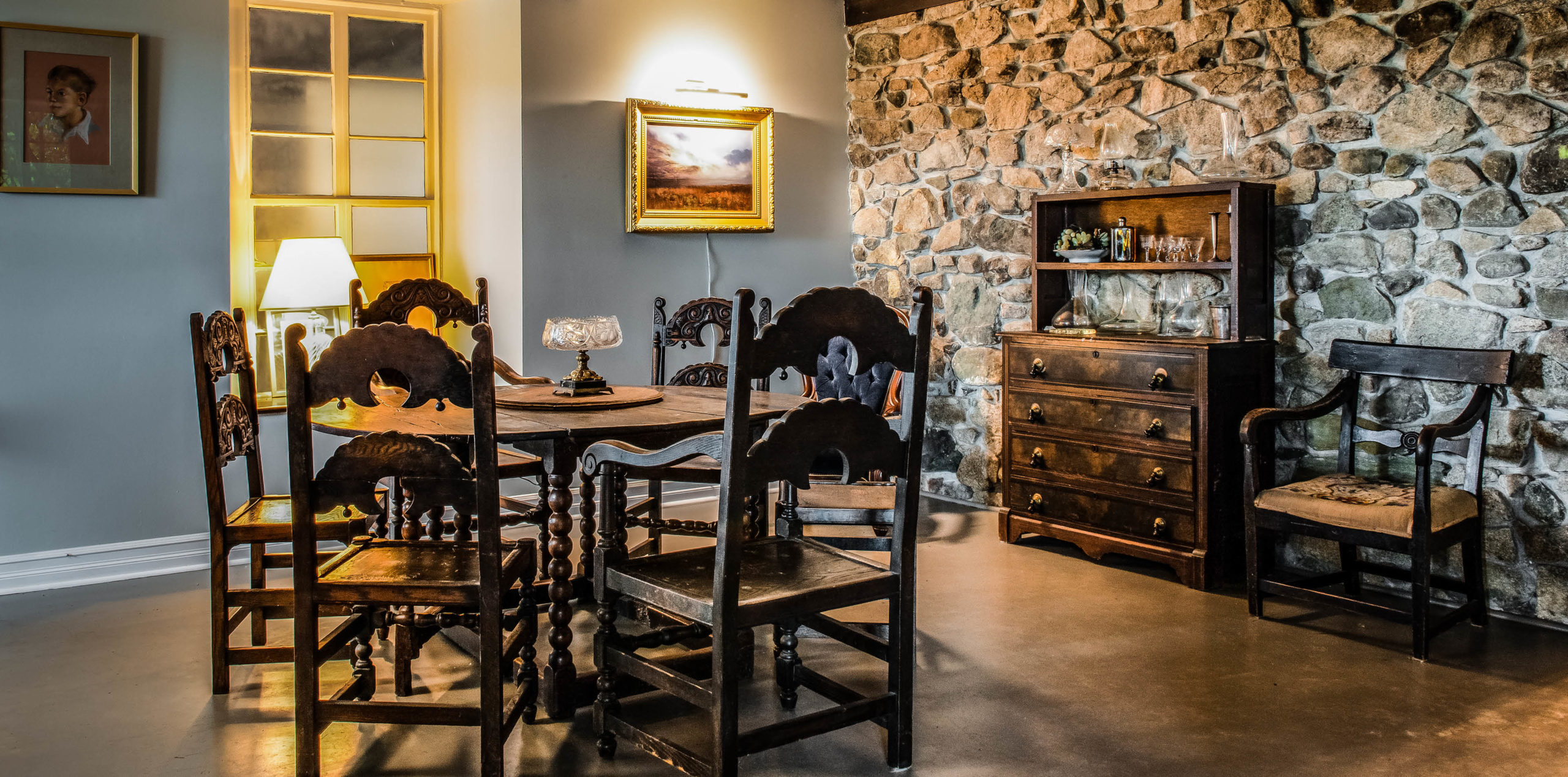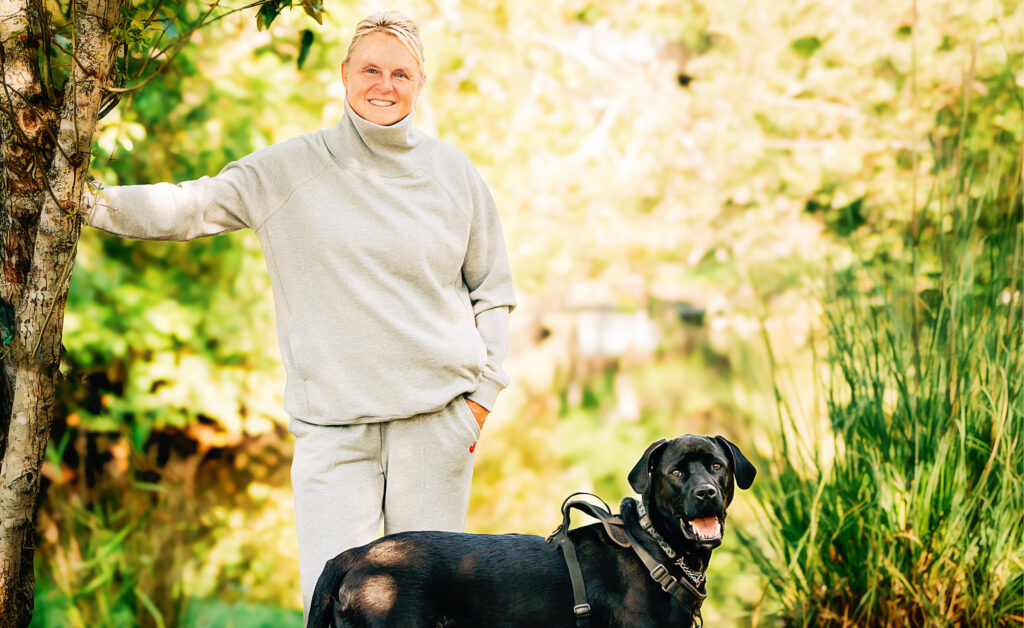by Janice Henshaw | photos by Janis Jean Photography
On the lower south slope of Mt. Newton, Bannockburn Farm began as a one-room cabin in 1855. William Thomson built it for his young wife Margaret and their infant son David. They were among the first pioneers to establish a home in the Saanich valley, which was then accessed only by a trail from Victoria. In 1852, The Hudson’s Bay Company bought 18,000 acres of land from the Coast Salish, and the original settlement at Bannockburn Farm ran to 200 acres.
Before meeting Margaret, William had survived a shipwreck on his way from San Francisco to Vancouver Island. The inebriated ship’s captain smashed the English brig into shore just north of Nitinat. Margaret, also from Scotland, had arrived on Vancouver Island after a stormy five-month voyage. She was 15 when she married William, who was 25. They had 15 children! Cougars, bears and other wildlife roamed the forests around Bannockburn Farm then – and they still do today. Industrious workers, full of courage and ingenuity, these early pioneers were made of solid stuff.
Tilar Miles, the previous owner and winemaker at Parsell Vineyard in the Martindale Valley and her husband Robert must have some of that pioneer blood coursing through them because they have taken on the huge task of restoring Bannockburn Farm. Both are 18th-century historians and professors. Things have changed since the cabin days. The total size of the home is now around 4,000 square feet. On three levels, there are six bedrooms and 2.5 bathrooms. From a terrific wraparound farmhouse veranda on the second level, there is a gorgeous view of valley farms, forest and big sky.
Tilar says: “We fell in love with the house when we first saw it. Well, I did. It was not the first choice for my husband. I said I was going to have it, and he was like, ‘Oh my god! You’re insane!'” The house and farm had become too much work for the previous owners, and the Miles family had to catch up on a lot of deferred maintenance. Once painted in red with yellow trim, the house now shows its graceful lines in fresh white limewash and grey cedar trim. The first limewash in the area most likely came from Butchart Gardens, a former limestone quarry.
Various people have suggested that Bannockburn is haunted by a ghost or two, but the Miles haven’t experienced a paranormal visit so far. One legend is that Margaret Thomson still inhabits the house. On one occasion, neighbours have told the Miles family, a historical society came for a visit. While one of the society’s members was on the upper third-floor landing, she apparently commented that it was a “pokey little house.” She later swore up and down that a cold hand, which certainly didn’t belong to anyone on the tour, then hit her on the back and tried to push her down the stairs!
Today the farm is bursting with life. There are chickens, sheep, white geese and, of course, a gentle livestock guardian dog named Frankie. A vineyard graces a sunny slope, and the geese help keep the weeds down. Parts of the extensive garden are at least 100 years old, says Tilar. “For a serious gardener (and I come from a family of serious gardeners), it’s like getting to drive a vintage Rolls Royce every day.”
Tilar and Winona Pugh have started a heritage garden project at Bannockburn called The Lost Garden. The idea is based on an essay by Alice Walker called In Search of Our Mothers’ Gardens. Tilar explains that “We are collecting from local families of all backgrounds cuttings of the plants that women passed along to other women. Seeds might have been the only thing that some women could take with them if they were immigrants, early settlers, or displaced by settlement.”
Tilar says that she and Robert have mainly focused on refreshing the interior of the house. Areas of damp plaster in the walls have been repaired, and fireboards added behind stoves. There is new enamel on the vintage clawfoot tub, and a “hideous” 1940s yellow bathroom was “corrected.” Fresh paint, warm bronze fixtures, handsome, exquisitely crafted antique cabinets and beautiful wallpaper make each room unique and special.
The house is a mysterious and cozy maze of rooms and passageways – a place to get lost in, full of history and stories and connections. Three red brick chimneys with fascinating curves pass through the rooms on the top floor. Tilar laughs as she says: “It is a house of cards held up by the chimneys. They are basically holding the house together as there is no modern framing.” The farm is an early example of “stress” construction. Lightweight insulation board has been carefully added to the sloped attic walls, and an electrical retrofit reached the stratospheric total of $50,000. Modern outlets, sadly, had concealed knob-and-tube wiring, a problem experienced by many purchasers of older houses.
“There isn’t any insulation in the walls, so it’s a pretty chilly farmhouse in winter,” said Tilar. The single-pane glass windows are the originals from the 19th century, and you can still see where, in the 1890s, one of the naughty Thomson boys scratched his name into the glass with his mother’s diamond ring. Heat for the house comes from a heat pump, two Valor propane fireplaces manufactured in North Vancouver by the Miles’ family, and two woodstoves, including an arched three-tier Ulefos stove, a cultural heritage piece from Norway that was a wedding present. On one wall hangs a painting circa 1900 that depicts the same room. The original chair, vases on the windowsills and curtains match those in the picture, creating a strong feeling of connection with Bannockburn’s past visitors and owners.
In the kitchen, which is below grade, the outside walls are two-foot-thick fieldstone. When these “bones” of the house get heated, the room temperature stays very comfortable. The star feature in the kitchen is a restored cream-coloured Aga Cooker highlighted by a dark blue wall. Originally invented in 1922 by a blind Swedish physicist, Aga Cookers have devoted followings amongst fans of country houses in parts of Canada, the U.K., and parts of Northern Europe especially. The elegant stove has two top heating plates and three ovens, allowing for some fairly serious homestead baking, should the mood hit. The farmhouse-style dining table is from the mid-17th century, an original piece from around the time of Shakespeare.
And what does it feel like to live and work in a house with so much history? Tilar replies: “Bannockburn doesn’t belong to us, but rather we belong to it. It’s a house with a spirit, and, without sounding too woo-woo, the veil is thin here. Humans have inhabited this piece of land for 10,000 years or more. The garry oaks in front of us have stood for hundreds of years. The house has stood for nearly 165 years. You are never really alone at Bannockburn.”


